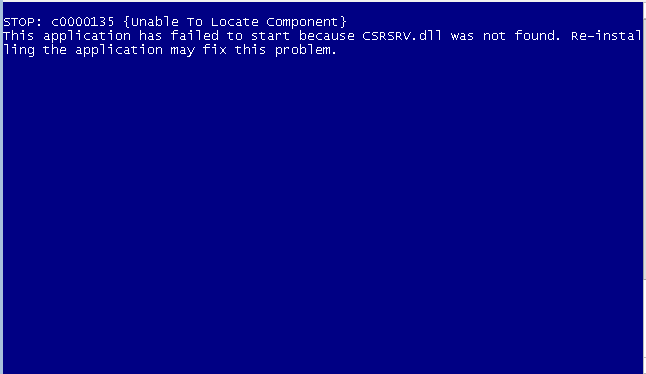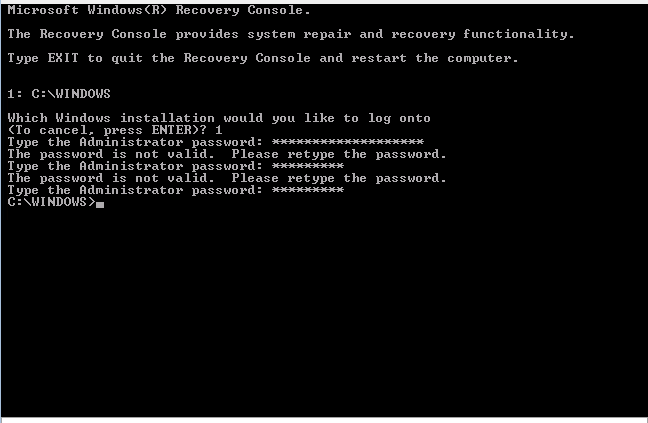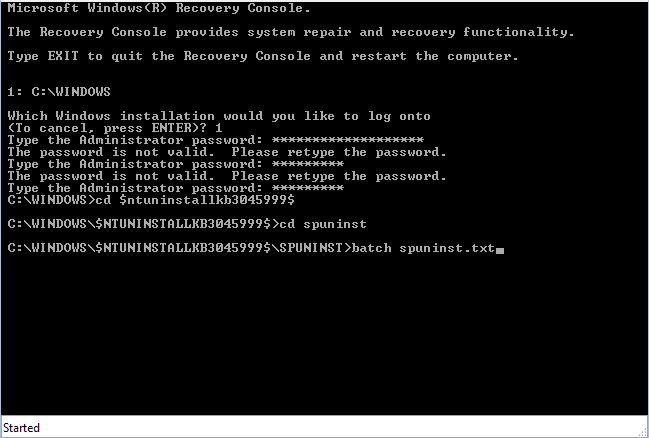 |
||||
  |
    |
|||
|
||||
|
Symptoms ... This particular machine is a Windows 2003 R2 server running in an virtual environment at a data center about 20 miles from where I live. I was able to bring it back to life remotely. The system was constantly rebooting - it would echo a few pings, then stop echoing, then echo them again a minute or so later as it rebooted:
I didn't know it was rebooting until I connected to the local console. I couldn't connect via RDP for reasons that would become obvious once I attached to the console and saw this:
The exact message (mostly for search engines as they can't read the screen above) read: STOP: c0000135 {Unable To Locate Component} No amount of safe mode booting, booting into last known good configuration, boot logging, or anything else brought it back from the dead. The Fix! You have to uninstall Microsoft KB3045999. There are manual ways to do this, and a pretty simple automatic way. Catch is, you have to be able to get your system booted in order to do the uninstall. The quickest / easiest way to do this is from the recovery console. If you are in front of your system, put in the Server 2003 or Server 2003 R2 boot CD into the drive and let it boot. You'll have to hit a key to boot from the CD. In my case, I was booting a virtual machine so I had to "virtually" insert the ISO of the CD into the virtual drive:
Once booted, you'll get a screen that looks like this:
Hit R to Repair! Your next screen looks like this:
Hit the number that corresponds to your windows installation, then enter the password. As you can see, I didn't get the password correct on the first... or second tries. Third time was the charm.
From here, type the following: cd $ntuninstallkb3045999$ You'll see a bunch of files that get copied from the uninstall directory. When done, remove the CD, reboot the server, and disable that update until it gets fixed! There are details of the security bulletin and other information here: https://support.microsoft.com/en-us/kb/3045999 ** I can't say if this causes problems in any other environments yet - so far Server 2003 R2 x86 (32 bit) was my first experience with this update and it caused nothing but problems. Final Words... Did this help you? Send me a note! Is this over your head and you need help? I can assist remotely. I can be reached at:
|
||||






